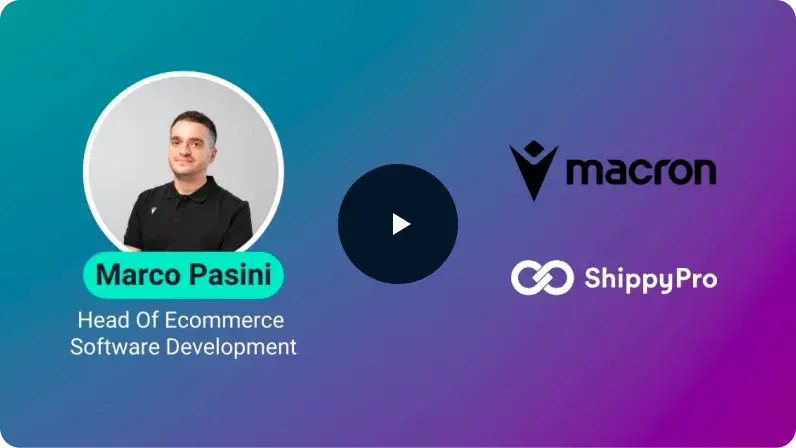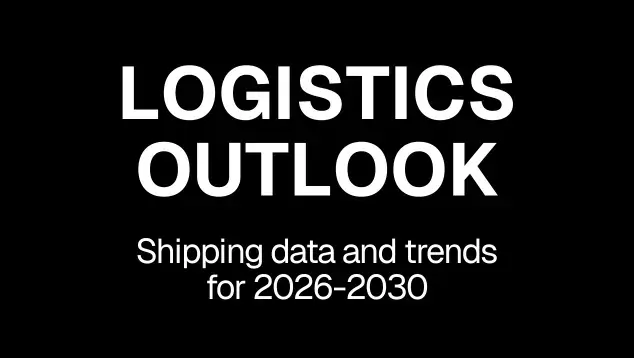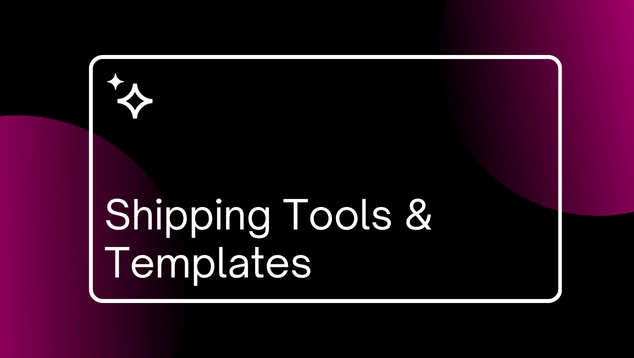Delivery exceptions: how to manage them without overwhelming customer service
Anyone managing logistics and post-purchase operations knows that problems never come alone. A shipment goes on hold, a delivery attempt fails, a customs document is incomplete: within a few hours, customer service fills up with “Where is my order?” and urgent cases. The result is rising costs and anxious customers.
The good news is that many exceptions can be prevented or resolved without human intervention if granular tracking is combined with proactive notifications and self-service portals. However, this requires a clear operating model with automated rules and defined responsibilities. In this article, we start from the root causes, quantify the impact, and propose a practical approach to reducing tickets and resolution times.
How it works: advanced tracking, automation, and a self-service customer portal trigger targeted notifications and intelligent workflows to resolve holds, failed attempts, and customs issues without overwhelming customer service.
What delivery exceptions are and why they impact customer experience and costs
Delivery exceptions include all events that deviate from the expected flow: warehouse holds, failed delivery attempts, inaccurate addresses, customs blocks, or damage. Every deviation adds uncertainty for the customer and unplanned work for internal teams. When information isn’t clear or timely, the first reaction is to contact support.
The economic impact is immediate: interactions handled via assisted channels cost far more than self-service. Gartner estimates a median cost per assisted contact of $13.50 vs. $1.84 for self-service, a gap that widens during peak post-purchase periods.
At the same time, a negative first delivery experience reduces repeat purchases and word-of-mouth. McKinsey links delivery issues to dissatisfaction and lower reordering; several studies show that many consumers abandon carts due to unconvincing shipping terms, and many do not return after a poor delivery experience.
The most common types of delivery exceptions
Holds arise when the carrier cannot proceed: incomplete address, unreachable recipient, missing documents, or lack of customer response. After a few days, storage fees apply and the risk of return-to-sender increases. For brands, this is a double cost: operational and reputational.
Failed deliveries often stem from the customer being unavailable during the first attempt or from unsuitable delivery windows. Without fast reschedule options, attempts multiply, costs rise, and the customer becomes frustrated. Inaccurate or non-standardised addresses amplify the issue as they combine with sorting errors.
Customs issues, finally, can block entire batches for hours or days: incorrect HS codes, inconsistent declared value, wrong incoterm (DAP vs DDP), missing authorisations, or unpaid duties. Every hour stopped at the border generates support requests and expectations to manage.
Why exceptions generate a high volume of tickets
Only 14% of issues are fully resolved via self-service; the rest leads customers to seek confirmation through assisted channels. If the update isn’t clear or doesn’t explain “what should I do now?”, the conversation moves to phone or chat.
In ecommerce, a large share of contacts comes from WISMO (Where Is My Order). Estimates show that WISMO requests can account for up to 50% of inbound contacts when timely updates and tracking pages are missing. It’s an indicative figure, but useful to understand the reduction potential.
Holds: causes, risks, and how to resolve them quickly
Holds are among the costliest exceptions because fees accumulate day by day and customer experience degrades quickly. The winning strategy combines real-time monitoring, clear responsibilities, and activating the customer on the right channel before they contact you.
How to monitor holds in real time and prevent ageing shipments
You need a unified view that aggregates carrier statuses and normalises them into operational categories: “Awaiting data”, “Address confirmation required”, “Held at depot”, “Customs: documents required”. A risk score based on days on hold, order value, and SLA helps prioritise actions.
Setting time thresholds is useful: 24 hours after the hold opens, send the first reminder to the customer; after 48 hours, trigger an internal action (data check, call to carrier); after 72 hours, consider rescheduling or returning. Solutions like ShippyPro, integrated with TMS/OMS and CRM, orchestrate these triggers and automatically feed work queues without manual steps.
Proactive contact models to prevent customers from calling support
Micro-copy matters more than the channel. The message must explain what happened, why action is needed, and what the next step is. The landing page must allow address corrections, pickup point selection, or contact confirmation, with a clear indicator of the updated estimated delivery date.
- SMS/WhatsApp for fast actions (with a one-click link to the order page)
- Email with detailed status and alternative options (locker, pick-up point, delegation)
- Branded tracking page with forms for updating address/contact details
Failed deliveries: how to prevent and manage notifications and failed attempts
Failed deliveries are often a symptom, not the cause. Calendars, addresses, and preferences not collected at checkout turn into wasted attempts. A systematic root-cause analysis helps design prevention rules and automatic case-closure flows.
Cause analysis (recipient absence, wrong address, carrier issues)
Understanding the primary cause prevents downstream work. Typically, the three macro-categories are:
- Recipient absence/unsuitable slot: the customer was unavailable during the proposed window.
- Incorrect address/contact issues: unvalidated forms, non-standard formatting, missing buzzer details.
- Carrier operational issues: vehicle breakdown, network overload, incorrect sorting.
Automatic notifications and self-service to let customers reschedule delivery
When tracking detects a “failed attempt”, immediately send a message offering three options: new date/slot, pickup at a partner location, or authorisation for safe-place delivery. The link should open a page with updated time slots and sync the choice in real time with the carrier.
Add automatic reminders if the customer doesn’t take action within 12–24 hours. If the case remains unresolved, automation should escalate only for high-value or SLA-critical orders. This reduces reactive contacts and increases second-attempt success rates.
Define a simple state machine: exception event → data enrichment (value, category, country) → decision → action. Actions include opening a ticket in the “logistics” queue, requesting documents, rescheduling, or returning. Exceptions unlikely to be resolved automatically should go to a human owner with clear SLAs.
Customs issues: how to minimise delays, costs, and support requests
Border clearance rewards precision. Most blocks arise from incomplete or inconsistent documentation compared to the goods. A minimum set of upstream validations and clear messages during clearance reduce dead time and unnecessary conversations.
Missing or incorrect documentation: how to prevent it
Standardise classification with certified HS codes and shared taxonomies across ecommerce, WMS, and ERP. Add validation rules on weight/value and checks on fiscal numbers (EORI, IOSS). Avoid copy-and-paste: data must propagate systematically from product master data to the label.
How to inform the customer before they contact support
When a shipment enters customs, communicate what is happening, who must do what, and in what timeframe. Add a single CTA: “Upload invoice”, “Pay duties”, “Provide broker authorisation”. Generic messages like “under review” prompt contact; operational instructions reduce friction and tickets.
Correct workflows to manage clearance and authorisations quickly
Create a flow with clear steps and owners: block detection → document request → verification → submission to broker → clearance confirmation → dispatch. Each step should have a deadline and a fallback (e.g. switching from DAP to DDP if thresholds are exceeded and margin allows). The customer portal must support uploads, payments, and consent.
How to reduce tickets by up to 60% with a proactive approach
Ticket reduction depends on your stack maturity and content quality. In real projects, adopting branded tracking and proactive alerts has reduced customer service calls by around 50% for some retailers; specific cases show even further reductions in WISMO requests.
The “up to 60%” is achievable in mature contexts that combine granular statuses, personalised notifications, and a customer portal capable of resolving the most common issues autonomously. The recommendation is to measure by cohort and sprint, adapting copy and timing to maximise resolution without generating unnecessary volume.
Advanced tracking and granular statuses
Move from “in transit/delivered” to states that inform and guide: “Incomplete address: confirmation required”, “Hold: action needed”, “Customs: duties to be paid”. Each status should indicate the next recommended action and an updated ETA. Without these, the user will call anyway.
Multichannel and personalised notifications
Respect preferences and context: SMS for urgency, email for detail, WhatsApp for quick interactions. Schedule messages according to the recipient’s time zone and likelihood of opening. Research shows that poorly designed proactive communication can generate additional volume; design messages that close the action, not open new questions.
Self-service customer portal to resolve issues autonomously
The order page must allow address correction, pickup point choice, safe-place consent, document upload for customs, and duty payment securely. Add a summary of completed actions and a clearly visible escalation option only when necessary.
Case study: how PhotoSì transformed its delivery experience with ShippyPro
 PhotoSì, the Italian leader in personalised photo printing with a platform for creating photobooks, prints, and photo products via ecommerce and mobile app, managed over one million shipments per year with manual processes, three different carriers, and slow, costly tracking.
PhotoSì, the Italian leader in personalised photo printing with a platform for creating photobooks, prints, and photo products via ecommerce and mobile app, managed over one million shipments per year with manual processes, three different carriers, and slow, costly tracking.
The challenge was clear: support international growth, reduce operational costs, and improve the delivery experience for customers.
The solution came through collaboration with ShippyPro: the platform enabled full automation of shipments, simplified carrier integration, and optimised the checkout process by introducing map-based selection and address validation.
The results were tangible: the operations team saw a reduction in manual workloads, and customer service handled 20% fewer tracking/delivery tickets, freeing up resources for higher-value activities. Additionally, they reported a 30% reduction in working hours and a 40% reduction in integration costs.
“With ShippyPro, our checkout now includes delivery and pickup maps to improve the customer experience. Address validation prevents costly delivery errors in global shipments.”
Francesco Merola | Sr. Logistics Manager @ PhotoSì
Read the full case study on ShippyPro
Which automations to implement to manage exceptions without overloading customer service
Automations and integrations help shift a significant share of cases from assisted to self-service handling, with a clear impact on cost per contact and average resolution time. The rule is simple: automate detection, decision, and first action; reserve complex exceptions for agents.
Automatic triggers for holds and failed deliveries
Create webhooks/events for statuses like “Exception”, “Held”, “Delivery attempt failed”. Each trigger initiates: customer notification, reminder timers, updated ETA, and, when needed, a data confirmation request. High-value shipments activate a priority channel with internal alerts.
Intelligent ticket routing
Not all cases should go to customer service. The system should automatically route network issues to the transport team, customs blocks to the export desk, and data issues to the data-quality team. Add rules based on order value, product category, country, and SLA to assign the right priority and owner.
Integration with CRM and customer care systems
Connect tracking and exception management to your CRM (e.g. Salesforce, Zendesk) so agents see current statuses, attempted actions, and “next best action” recommendations. Solutions like ShippyPro act as a multi-carrier orchestration layer and send updates/actions to the CRM via API, avoiding tab-switching and duplication.
Conclusions: from logistical issue to loyalty opportunity
Delivery exceptions won’t disappear. But you can decide whether they become bottlenecks or moments to build trust. With clearer statuses, action-oriented notifications, and a genuinely useful portal, you can make the post-shipping phase predictable.
Four practical takeaways to get started immediately:
- map the five most frequent exception states and write micro-copy that guides toward action;
- activate triggers and reminders for holds and failed attempts;
- connect the customer portal to your CRM to track which exceptions close without agents;
- finally, measure the impact on cost per contact, NPS, and time-to-resolution, and iterate every two weeks.
If you want to learn more about orchestrating advanced tracking, notifications, and workflows with a unified layer, explore how a post-shipping platform like ShippyPro can support your operating model without changing carriers or CRM.
Ecommerce shipping articles
Frequently asked questions about delivery exceptions
What are delivery exceptions and why are they a problem for ecommerce and retail?
Delivery exceptions include all events that deviate from the expected flow: holds, failed attempts, incorrect addresses, customs blocks, or damage. Each deviation generates uncertainty for the customer and unplanned work for internal teams, with a direct impact on operational costs, customer service tickets, and repurchase rates.
What are the most common types of delivery exceptions?
The most frequent are holds (incomplete address, unreachable recipient, missing documents), failed deliveries (recipient absence, unsuitable slots, sorting issues), and customs problems (incorrect HS codes, inconsistent values, wrong incoterms, or unpaid duties). All these situations may lead to extra costs, delays, and return-to-sender.
Why do exceptions generate such a high volume of customer service tickets?
Because information is often unclear or doesn’t explicitly state “what should I do now?”. Customers then seek confirmation through assisted channels, which have a much higher average cost per contact. WISMO requests can account for up to 50% of inbound contacts when branded tracking and timely updates are missing.
How can I monitor holds in real time and reduce the risk of return-to-sender?
You need a unified view that aggregates carrier statuses and normalises them into operational categories. Time thresholds (e.g. 24/48/72 hours) and risk scores based on days on hold, order value, and SLA help prioritise actions and activate the customer before the shipment ages or returns to sender.
How can I proactively prevent and manage failed deliveries?
By starting with a root-cause analysis, you can design prevention rules and automatic flows. At the first “failed attempt”, it’s useful to send notifications immediately with options to reschedule, pick up from a partner point, or authorise safe-place delivery, via a self-service page that updates date and slot in real time.
How do advanced tracking and proactive notifications reduce costs and tickets?
Switching from generic statuses to granular, action-oriented states helps customers understand what’s happening and what they need to do. Targeted, multichannel notifications with clear call-to-actions reduce the need to contact support and shorten time-to-resolution.
What role does a self-service customer portal play in exception management?
A well-designed customer portal allows customers to correct addresses, choose pick-up points, give safe-place consent, upload customs documents, and pay duties independently. This shifts a significant portion of requests from assisted to self-service handling, improving costs and resolution times.
How can I reduce tracking and delivery tickets by up to 60%?
Such results are possible in mature contexts that combine granular statuses, personalised notifications, customer portals, and automation for recurring exceptions. Real-world projects show around 50% reduction in customer service calls thanks to branded tracking and proactive alerts, with some cases reaching 60% on WISMO requests.
Which automations should I implement to avoid overloading customer service?
The rule is to automate detection, decision, and first action: triggers on exception statuses, automatic customer notifications with reminders, ETA updates, and intelligent routing to the correct team. Agents focus only on complex, high-value, or SLA-critical cases.
How can a post-shipping platform like ShippyPro help?
A unified post-shipping layer like ShippyPro aggregates multi-carrier tracking, orchestrates proactive notifications, manages exception workflows, and integrates with CRM and customer-care systems. In the PhotoSì case, this approach led to fewer delivery-related tickets and significant savings in time and integration costs.
ShippyPro is the complete shipping software for online and offline retail. With Label Creator, Track & Trace, Easy Return and Analytics features, our software simplifies your shipping operations. ShippyPro integrates with over 180 carriers and 80 sales channels, making it compatible with a wide range of products and use cases.













